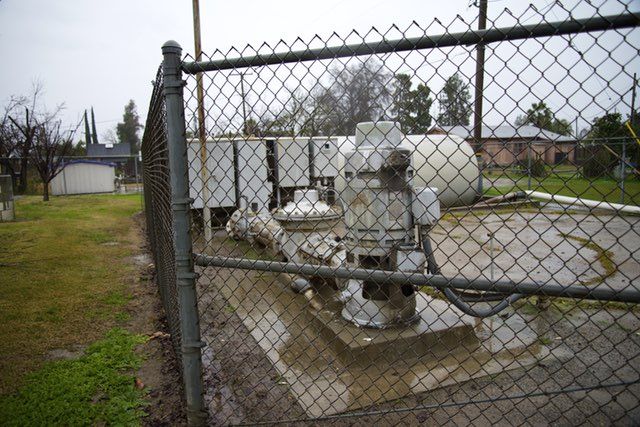California Set to Regulate Carcinogen in Water for Decades
Published on by Water Network Research, Official research team of The Water Network in Government
Hundreds of drinking-water wells across California’s San Joaquin Valley have been found to contain 1,2,3-trichloropropane, a likely human carcinogen. The state takes a big step forward in regulating the chemical.

A water well in Del Rey, California, a small community in Fresno County. Del Rey is one of dozens of communities in the San Joaquin Valley that has found 1,2,3-trichloropropane, a likely human carcinogen, in its water. Tara Lohan
1,2,3-TCP, as it is commonly known, has been classified as a likely human carcinogen; in 1992 California added it to the list of chemicals known by the state to cause cancer. The first known detections in wells in the San Joaquin Valley came in 2000, according to the State Water Resources Control Board. And between 2001 and 2015 there have been detections at 471 wells ranging from 5 parts per trillion to 10,000 parts per trillion, with the most contaminated wells being found in Kern and Fresno counties.
Despite the prevalence and the risk, the state had not regulated the chemical.
But that will change in the next few months and when it does, it could mean two major companies having to pay out millions in remediation costs for contaminated wells.
Contaminating Groundwater
1,2,3-TCP is a man-made chlorinated hydrocarbon. It is used in industrial processes for cleaning and degreasing. A byproduct of the plastics industry, in the 1940s and 1950s it became part of a soup of chemicals formulated as a soil fumigant – a pesticide injected into the ground to kill tiny worms known as nematodes. Shell manufactured one of the fumigants, known as D-D, and Dow had a competing product called Telone.
They were “two of the most widely used soil fumigants in California” according to a 1983 report from the resources control board’s toxic substances control program.
“The really egregious part of this whole story is that this was a totally man-made problem and was totally avoidable,” said Andria Ventura, toxics program manager at Clean Water Action, the grassroots pressure group. Internal company documents discovered during litigation have shown that Dow and Shell knew early on that 1,2,3-TCP was not an active ingredient in the products and served no purpose in killing nematodes.
However, decades after products containing 1,2,3-TCP ceased to be used in the San Joaquin Valley, the consequences remain. It persists in the environment, leaches from the soil to the water and sinks to the bottom of an aquifer.
Regulation on the Way
Del Rey is one of about 40 communities that so far have engaged in litigation to recoup remediation costs. Attorney Todd Robins has represented dozens of small valley communities suing the companies to help pay the cost of removing the contaminant from drinking-water wells.
He said that while some of the lawsuits have already been settled out of court, most are moving slowly because California does not currently have a maximum contaminant level (MCL) stating how much of the chemical is safely allowed in public drinking-water systems.
The state has been moving toward establishing an MCL for some years.
In 2009 California’s Office of Environmental Health Hazard Assessment set a public health goal of 0.7 parts per trillion (ppt), a level deemed to be safest for protecting public health. But public health goals are guidelines and not enforceable regulations. The next step is establishing the MCL, which is also in the works.
The SWRCB staff have issued a preliminary recommendation for an MCL of 5 parts per trillion, which is higher than the public health goal, but is the lowest detection level for most laboratories. A 45-day public comment period on the proposed draft MCL has just started and the water board will hold a public hearing on April 19.
After that feedback, the board is expected to adopt the MCL this summer, according to the SWRCB. Water systems would need to begin sampling for 1,2,3-TCP by Jan.1, 2018.
When the state issues the regulation, “that should have some significant reverberations on how the litigation comes out,” said Robins. “It will certainly result in more water systems joining the fray. A state rule would mean even the smallest water providers will have to test and most will not have the resources for remediation.”
The water board estimates that remediation will cost $34 million annually statewide for the affected systems if the MCL is indeed set at 5 parts per trillion. The numbers could climb if more communities are affected or if contamination worsens in wells, said Mark Bartson, supervising sanitary engineer with the control board’s division of drinking water.
Read more at: Water Deeply
Media
Taxonomy
- Public Health
- Decontamination
- Decontamination
- Contaminant Removal
- Chemical Analysis
- Water Supply
- Drinking Water
- Water Wells
- Pollution
- Contaminant Control